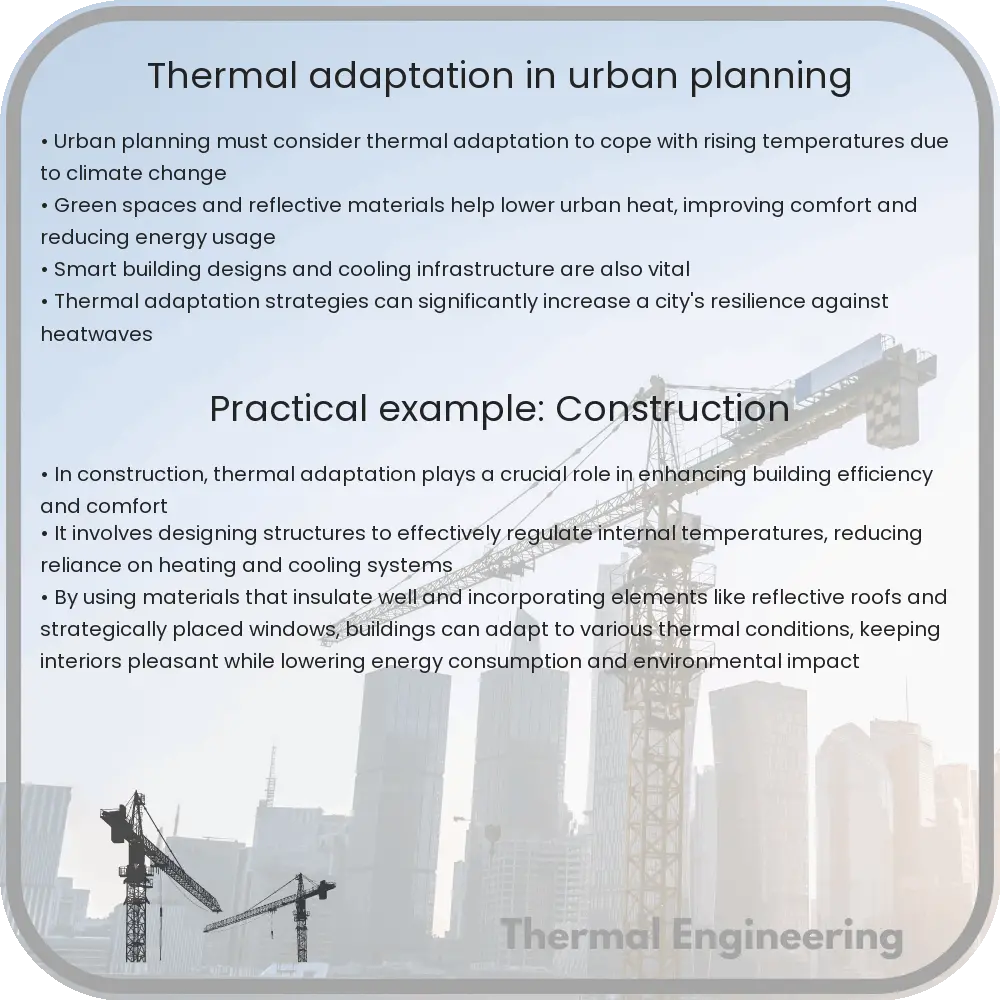Urban planning incorporates thermal adaptation strategies to enhance thermal comfort and energy efficiency in response to climate change and urban heat islands.

Thermal Adaptation in Urban Planning
As urban areas continue to expand, the incorporation of thermal adaptation strategies in urban planning has become crucial to address the increasing challenges posed by climate change and urban heat islands. This article explores the concept of thermal adaptation in urban environments and highlights some effective strategies that can be implemented in urban planning to enhance thermal comfort and energy efficiency.
Understanding Urban Heat Islands (UHI)
The phenomenon of Urban Heat Islands (UHI) occurs when urban regions experience significantly higher temperatures than their rural surroundings. This is primarily due to the extensive use of materials like concrete and asphalt, which absorb and retain heat, fewer green spaces, and high energy consumption leading to heat generation.
Strategies for Thermal Adaptation
- Increasing Albedo: Albedo refers to the reflectivity of surfaces. Urban planners can increase the albedo of a city by selecting materials for roads, rooftops, and buildings that are highly reflective. This can significantly reduce the absorption of solar radiation, thereby lowering ambient temperatures.
- Enhancing Green Infrastructure: Integrating green spaces such as parks, green roofs, and green walls helps mitigate UHI effects. Vegetation not only provides shade but also cools the air through the process of evapotranspiration.
- Urban Morphology Optimization: The layout of the city, including the width of the streets and the orientation and height of buildings, can influence air flow and solar access. Optimizing these factors can maximize natural ventilation and reduce heat retention.
- Water Bodies: Incorporating water features like ponds, fountains, and canals can cool the surrounding areas, leveraging the cooling effects of water through evaporation.
Role of New Technologies and Innovations
Innovative technologies also play a significant role in supporting thermal adaptation in urban planning. For instance, smart urban furniture and adaptive building materials that change properties based on temperature are being explored. Moreover, advanced cooling pavements that reflect more sunlight and absorb less heat are being developed to replace traditional materials.
Case Studies: Successful Implementations
- Singapore’s Green Plan: Singapore has integrated extensive green roofs and vertical gardens in its urban fabric, significantly lowering urban temperatures and enhancing the city’s sustainability profile.
- Stuttgart’s Airflow Guidance: Known for its strategic urban planning, Stuttgart, Germany, has implemented regulations to ensure that air cooling paths, which channel fresh air from the city’s surroundings, remain unobstructed by new construction.
Challenges and Future Directions
While numerous strategies for thermal adaptation are known, their implementation often faces challenges such as budget constraints, political hurdles, and resistance from public or private stakeholders. However, the increasing need to create sustainable and livable urban environments is driving innovation and adoption of thermal adaptation measures. Future urban planning must seamlessly integrate multidisciplinary approaches that involve architects, engineers, and environmentalists to develop solutions that are both effective and culturally apt.
In conclusion, thermal adaptation plays a key role in the sustainable development of urban areas. Through thoughtful planning and the integration of innovative technologies and natural elements, cities can not only tackle the challenges posed by increased urban temperatures but also improve the overall quality of life and sustainability of urban environments.